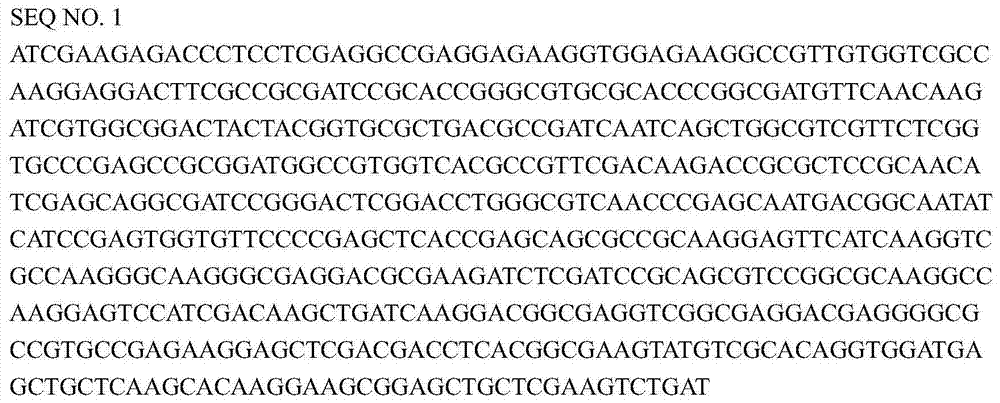A genetic engineering strain for increasing the yield of ascomycin and a constructing method
A technology of genetically engineered strains and ascomycin, which is applied in the field of genetic engineering, can solve the problems of unreported patent research on ascomycin genetically engineered strains, and achieve significant application value, increase production, and reduce costs
- Summary
- Abstract
- Description
- Claims
- Application Information
AI Technical Summary
Problems solved by technology
Method used
Image
Examples
Embodiment 1
[0054] Example 1: Construction of double-gene tandem overexpression vector pIBNR
[0055] Using the genome extracted from the S.hygroscopicus var.ascomyceticus mycelia as a template, design primers to PCR amplify the fkbN and frr gene fragments, and detect the resulting PCR products by 0.8% agarose gel electrophoresis, and the sizes are 2700bp , 500bp electrophoresis band. After the frr gene amplified fragment was purified, digested and recovered, it was ligated with the corresponding digested pUC18 plasmid, transformed into DH5α Escherichia coli competent cells, positive transformants were screened on the ampicillin resistance plate, the plasmid was extracted, and the restriction endogenous Dicer NdeI and XbaI were used for double-digestion verification. After double-digestion, a fragment of about 500 bp was obtained by agarose gel electrophoresis, indicating that a recombinant plasmid with the correct insertion sequence was obtained, named pUCR, and transformed into the bact...
Embodiment 2
[0067] Example 2: S.hygroscopicus var.ascomyceticus-E.Coli ET12567 (pIBNR) genera indirect conjugative transfer experiment
[0068] (1) The donor bacterium is E.coli ET12567 (PU28002) containing the overexpression vector pIBNR, and the recipient bacterium is fresh spores of Streptomyces hygroscopicus.
[0069] (2) Inoculate 500 μL E. coli donor into 10 mL of fresh LB medium containing corresponding antibiotics (50 μg / mL apramycin, 25 μg / mL kanamycin, 25 μg / mL chloramphenicol), overnight at 37 °C Cultivate; inoculate 1 mL of the overnight culture into 50 mL of fresh LB containing the corresponding antibiotics, and culture at 37°C until OD 600 0.4-0.6, 4000r / min centrifuge 3min to collect the bacteria,
[0070] (3) Wash the bacteria twice with an equal volume of fresh LB (to wash off the antibiotics), and finally suspend with 2 mL of LB liquid medium.
[0071] (4) Scrape off the fresh spores of Streptomyces hygroscopicus, prepare a single spore suspension, wash once with 500 μ...
Embodiment 3
[0080] Example 3: Fermentation experiment of ascomycin-producing engineering strain Streptomyces hygroscopicus var.ascomyceticus TD01
[0081] (1) culture medium
[0082] Seed liquid medium (g / L): starch 10, glucose 30, peptone 6, yeast powder 6, CaCO 3 2, pH 7.0
[0083] Fermentation medium (g / L): 20 starch, 40 dextrin, 5 peptone, 5 yeast powder, 5 corn steep liquor, CaCO 3 1. MgSO 4 ·7H 2 O 1,MnSO 4 ·H 2 O 0.5, (NH 4 ) 2 SO 4 1.5,K 2 HPO 4 ·3H 2 O 0.5, soybean oil 11.
[0084] (2) Fermentation experiment: Scrape the spores of the high-efficiency ascomycin-producing genetically engineered strain Streptomyces hygroscopicus var.ascomyceticus TD01 obtained by the present invention and the spores of the starting strain Streptomyces hygroscopicus from an inoculation loop respectively, and inoculate into 250 mL of shaker of 40 mL seed culture medium. In the bottle, 28 ℃, 220rpm shaking table culture 60h, prepare seed solution; According to the volume ratio is 10% inocu...
PUM
 Login to View More
Login to View More Abstract
Description
Claims
Application Information
 Login to View More
Login to View More - R&D
- Intellectual Property
- Life Sciences
- Materials
- Tech Scout
- Unparalleled Data Quality
- Higher Quality Content
- 60% Fewer Hallucinations
Browse by: Latest US Patents, China's latest patents, Technical Efficacy Thesaurus, Application Domain, Technology Topic, Popular Technical Reports.
© 2025 PatSnap. All rights reserved.Legal|Privacy policy|Modern Slavery Act Transparency Statement|Sitemap|About US| Contact US: help@patsnap.com


